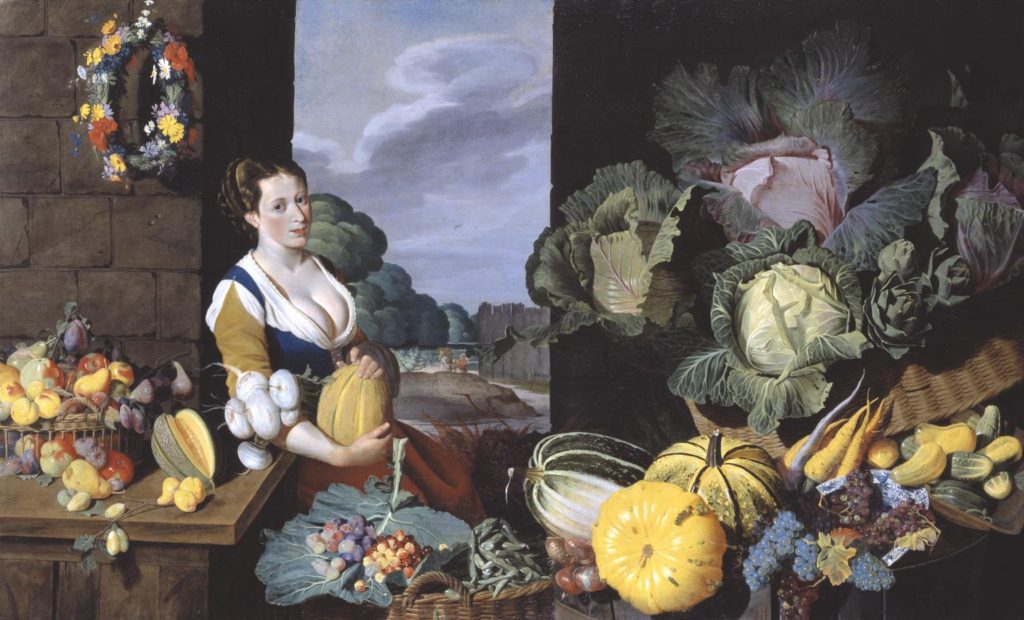Cook maid with Still Life of Vegetables and Fruit, painted by Sir Nathaniel Bacon (c.1620-5)

Technical:
Incorporates highlights and shadows, showing a clear understanding of light and dark. This image contains three factors. The stature and framing of the female subject in the centre, as well as the clouds in the sky in the background and a series of fruits and vegetables in the foreground.
Visual:
The image captures a slightly larger woman surrounded by fruits and vegetables, both signify some sort of wealth or financial sustenance to be able to afford those foods and clearly have enough food on the table to thrive. The position of a large fruit over the woman’s belly represents fertility and the ability to carry and produce a healthy child. The composition is very colourful, with fruits and vegetables around the base of the image and a flowery wreath hung up on the wall.
Contextual:
‘Cookmaid’ and market scenes, popular in the seventeenth century, evolved in the Low Countries from a genre practised by Pieter Aertse and his pupil Joachim Beuckalaer, which combined contemporary kitchen scenes with a New Testament episode beyond. An inventory of 1659 connected to the will of the artist’s wife lists ‘Ten Great peeces in Wainscote of fish and fowle’. Two other ‘Cookmaid’ pictures are known to exist: Cookmaid with Still Life of Game and Cookmaid with Still Life of Birds, both in the possession of the artist’s descendants. The Tate’s work is possibly part of this group. Such groups were often intended to depict the four seasons or the twelve months of the year. In the case of this piece, however, although every item represented in the painting was grown in England at the time, not all would have been in season simultaneously. Bacon, according to a letter dated 19 June 1626, was growing melons at his estate in East Anglia, and he was known to have a keen interest in horticulture. The subject would most likely have had erotic connotations. The abundance of ripe melons surrounding the cookmaid echo her figure.
